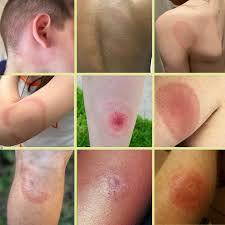Understanding Lyme Disease: Causes, Symptoms, Diagnosis, Treatment, and Prevention

Lyme disease is a complex and increasingly common infectious disease caused by the bacterium Borrelia burgdorferi, transmitted to humans through the bite of infected black-legged ticks, commonly known as deer ticks. First identified in the town of Lyme, Connecticut, in the 1970s, Lyme disease has since become a significant public health concern across North America, Europe, and parts of Asia.
Causes and Transmission
“Beat the Pressure: A Comprehensive Guide to Lowering Blood Pressure Naturally.”
Buy book from Gumroad or Paystack
The primary cause of Lyme disease is the spirochete bacterium Borrelia burgdorferi in the United States, with related species such as Borrelia afzelii and Borrelia garinii responsible for cases in Europe and Asia. The disease is transmitted via the bite of infected Ixodes ticks, which acquire the bacteria by feeding on infected small mammals and birds. These ticks are typically found in wooded, grassy, or brushy areas, especially in late spring and summer when nymph-stage ticks are most active.
Symptoms
Lyme disease manifests in multiple stages, with symptoms varying widely among individuals:
- Early Localized Stage (3 to 30 days post-tick bite): The hallmark sign is erythema migrans (EM), a distinctive expanding red rash often resembling a bull’s-eye. Other early symptoms include fever, chills, headaches, fatigue, muscle and joint aches, and swollen lymph nodes.
- Early Disseminated Stage (days to weeks post-infection): If untreated, the bacteria can spread through the bloodstream, causing multiple EM lesions, neurological symptoms such as facial palsy (Bell’s palsy), meningitis, or heart problems like Lyme carditis.
- Late Disseminated Stage (months to years post-infection): Chronic arthritis, particularly in large joints like the knees, neurological issues such as neuropathy or cognitive difficulties, and rarely, chronic skin conditions may develop.
Diagnosis
Diagnosing Lyme disease can be challenging due to the variability of symptoms and similarity to other conditions. Clinical diagnosis is primarily based on patient history, exposure risk, and physical examination, especially the presence of the EM rash. Laboratory tests, including enzyme-linked immunosorbent assay (ELISA) followed by Western blot for confirmation, are used to detect antibodies against Borrelia burgdorferi. However, these tests may be negative in early infection, and false positives can occur, necessitating careful interpretation.
Treatment
Early treatment with appropriate antibiotics typically results in full recovery. The standard regimen involves oral doxycycline, amoxicillin, or cefuroxime axetil for 14 to 21 days. Intravenous antibiotics may be required for more severe manifestations like neurological or cardiac involvement. Post-treatment Lyme disease syndrome (PTLDS) describes persistent symptoms such as fatigue and joint pain after treatment, though the benefits of prolonged antibiotic therapy remain controversial.
Prevention
Preventing Lyme disease hinges on minimizing tick exposure and prompt removal of ticks:
- Avoiding tick-infested areas, especially during peak seasons.
- Using insect repellents containing DEET or permethrin-treated clothing.
- Wearing long sleeves, pants tucked into socks, and light-colored clothing to spot ticks easily.
- Conducting thorough tick checks after outdoor activities.
- Removing attached ticks promptly with fine-tipped tweezers.
Public awareness and environmental management, such as reducing tick habitats near residential areas, also play vital roles.
Conclusion
Lyme disease is a multifaceted illness requiring awareness for early detection and treatment to prevent long-term complications. As tick populations and geographic range expand due to climate and environmental changes, understanding Lyme disease’s transmission, symptoms, diagnosis, and prevention is essential for public health. Ongoing research continues to improve diagnostic methods, treatment options, and vaccine development to combat this challenging disease.
💔 “She said she loved me. And for fifty-two years, I believed her.” 💔
Buy The Book "The Longest Lie: A Husband’s Journey Through Love, Betrayal, and Redemption" From Gumroad






